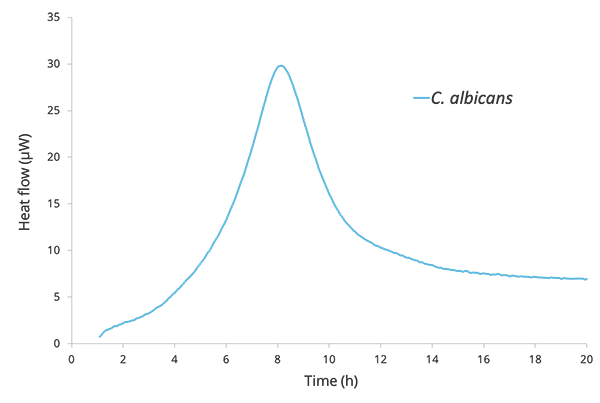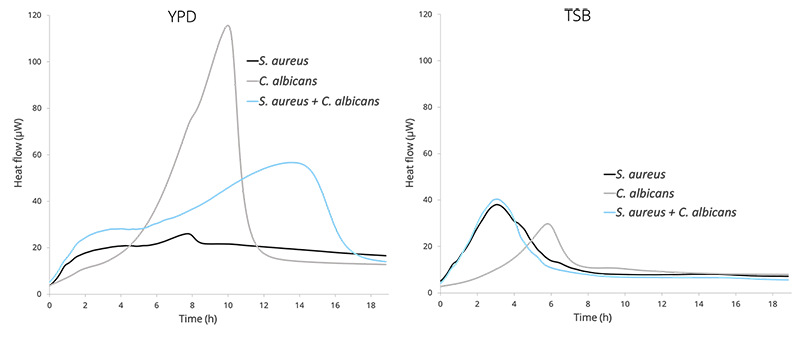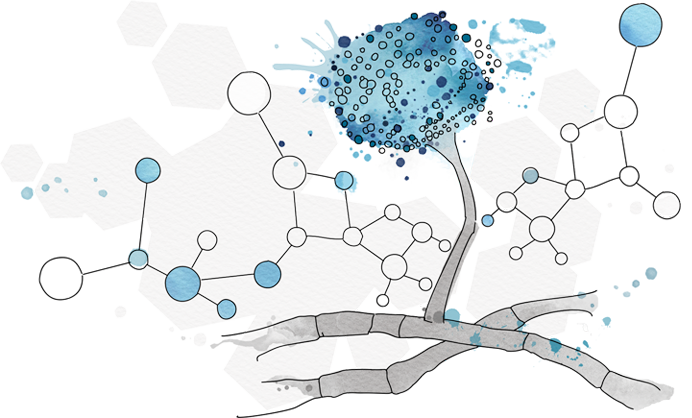The calScreener is the ideal solution for fungal research and antimicrobial susceptibility testing
It can be difficult to get useful CFU or optical density data from fungi, especially if they are filamentous. The properties of isothermal microcalorimetry lend themselves to studying fungi as they don’t require CFU or optical density measurements which can give misleading and inaccurate data.
Instead, isothermal microcalorimetry measures the energy produced over the whole fungal sample, giving an accurate representation fungal metabolism. If fungi grow as short or long filaments, clump together or spread out, it doesn’t matter, the calScreener will indiscriminately measure the metabolism so that you know exactly how your sample is behaving.
A simpler way to measure growth
Avoid complications from methods such as cfu plating and OD readings which often misrepresent real fungal growth. the calScreener is simple and unbiased.
Real-time monitoring
Monitor the metabolism of your fungal sample in real time to see how and when the cells respond to different treatments.
Anaerobic conditions
Setting up anaerobic experiments in the calScreener is as simple as setting up our experimental plate in an anerobic environment.
Antimicrobial Susceptibility Test
Using the calScreener™ it is possible to see the effect of antifungal compounds at much earlier stages than with traditional methods which take a long time to show results.
Filamentous growth or yeast? No problem
Microcalorimetry will work whether the sample is undergoing hyphal growth or is in budding yeast form. Even if both forms are present the calScreener will continue to record the metabolism.
Thermal fingerprint
The output of a calScreener™ experiment is a thermogram which is the engergy exchange by a sample over time. This is often completely unique meaning in the future it could be used to identify fungi.
The calScreener™ can also be used for media that are not viable for optical readings or microscopy. Opaque media or thick solutions that would block microfluidic channels can easily be added to the calScreener with no loss of signal.
This makes isothermal microcalorimetry perfect for conditions where it is difficult to measure fungal growth. By measuring the metabolism in the calScreener™, it is possible to get a high-resolution picture of how the fungal metabolism is being affected in real-time. Microcalorimetry can provide a fast and sensitive way to measure fungal metabolism and the effect of antifungal agents.

Microbial community profiles

Mixed-culture heat flow profiles can vary depending on media choice and the interactions of the different organisms. The accumulated energy release of the microbial community can be calculated, and comparisons between the mixed-culture and the individual organisms metabolic profiles can be easily drawn.
Microcalorimetry can reduce the complications in determining fungal survival when treating them with antifungal compounds and during antimicrobial susceptibility testing. The energy produced by fungal metabolism can be visualised in real-time using a thermogram giving a clear visual readout of how antifungals are affecting the metabolism of the sample and if they would be an effective treatment.



